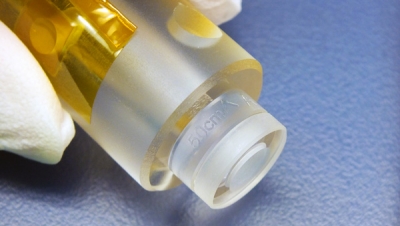CSEM - LISA mission
November 2019

Ready to unlock the secret of gravitational waves?
Laser Prototype for Space-Based Gravitational Wave Detector – Key component for LISA mission to detect gravitational waves from space to be presented at OSA Laser Congress.
In partnership with Syderal and Oewaves, CSEM has developed a prototype laser that will be used at the heart of the first space-based gravitational wave observatory – the Laser Interferometer Space Antenna (LISA) mission. The team’s new laser nearly meets the stringent requirements outlined for LISA’s instrumentation, representing an important step toward bringing the ambitious observatory program to fruition.
Optical reference cavity. Credit: CSEM
LISA will complement ground-based gravitational-wave detectors, like the U.S. National Science Foundation (NSF)-funded Laser Interferometer Gravitational-wave Observatory (LIGO), by deploying a gravitational wave detection system in space. In 2016, NSF announced that LIGO had made the first-ever direct observations of gravitational waves, ripples in the fabric of space and time that were predicted by Albert Einstein 100 years earlier in his general theory of relativity.
Both the LIGO and LISA observatories rely on lasers to detect gravitational waves. In addition to the precision and reliability required for any gravitational wave detector, the laser onboard the LISA mission must meet additional criteria to ensure it is suitable for long-term use in space.
LISA is led by the European Space Agency (ESA) in collaboration with the U.S. National Aeronautics and Space Administration (NASA).
Please, read the whole press release here.
Contact CSEM
Dr. Steve Lecomte
Section Head; Time & Frequency Systems
CSEM SA Neuchâtel
Contact Swissphotonics NTN
Dr. Christoph S. Harder
President Swissphotonics NTN
+41 79 219 90 51
18 November 2019, Beni Muller + Iris Bollinger

